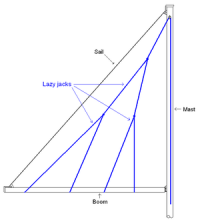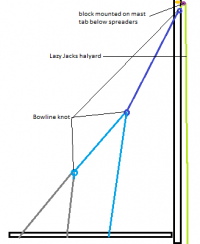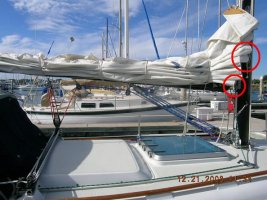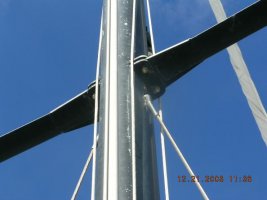adam
Member III
I'm working on updating my E29 so I can single hand her. I'll be getting an autopilot which will take care of many things, but I still need a way to be able to flake the mainsail myself.
The harken system seems unnecessarily complex.

Is there any reason I couldn't simply tie parachute cord (or other light line) to the topping lift and run it down either side of the boom like this?

To prevent chafing, I could simply tie these lazy jack lines to the end of the boom along with the topping lift.
Thanks for any advice!
The harken system seems unnecessarily complex.

Is there any reason I couldn't simply tie parachute cord (or other light line) to the topping lift and run it down either side of the boom like this?

To prevent chafing, I could simply tie these lazy jack lines to the end of the boom along with the topping lift.
Thanks for any advice!



